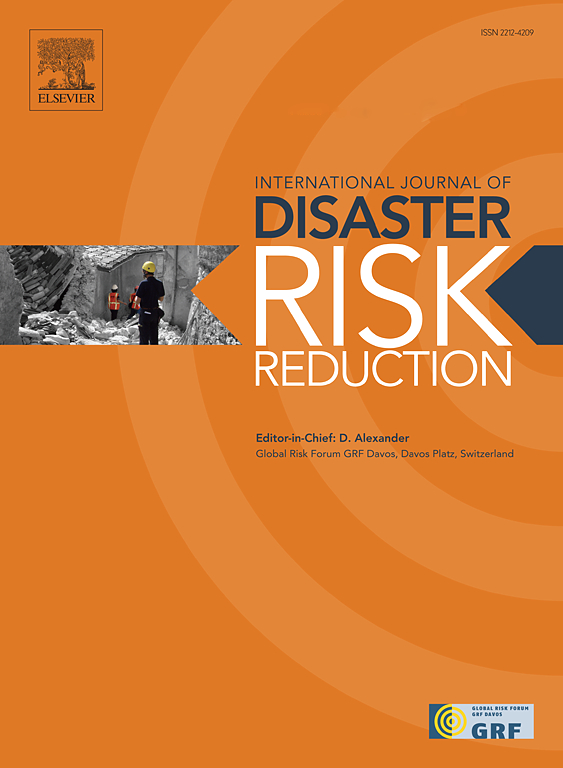Strategic hazard mitigation planning
IF 4.2
1区 地球科学
Q1 GEOSCIENCES, MULTIDISCIPLINARY
International journal of disaster risk reduction
Pub Date : 2024-10-25
DOI:10.1016/j.ijdrr.2024.104923
引用次数: 0
Abstract
A multitude of studies have emerged in recent years that examined the quality of hazard mitigation plans. This study adds to the existing body of research by examining the quality of mitigation strategies, associated mitigation actions, and adherence to strategic planning principles. The study reviewed 64 local Louisiana hazard mitigation plans producing a dataset of 7729 proposed mitigation actions. Mitigation actions were assigned one or more FEMA project codes as well as one of six government powers. Comparative statistics revealed that coastal and inland parishes do not propose distinctly different mitigation plans despite differences in local risk and vulnerability profiles. While plans contained highly similar types of proposed mitigation actions, the majority of proposed mitigation actions consisted of building and infrastructure projects. Furthermore, hazard mitigation plans were largely aspirational in nature and lacked a true strategic roadmap for future risk reduction.
减灾战略规划
近年来出现了许多研究,对减灾计划的质量进行了考察。本研究通过考察减灾战略的质量、相关的减灾行动以及对战略规划原则的遵守情况,对现有的研究成果进行了补充。这项研究审查了路易斯安那州的 64 个地方减灾计划,产生了一个包含 7729 项拟议减灾行动的数据集。减灾行动被赋予了一个或多个联邦紧急事务管理局项目代码以及六种政府权力之一。比较统计显示,尽管地方风险和脆弱性概况存在差异,但沿海和内陆教区提出的减灾计划并无明显不同。虽然计划中包含的拟议减灾行动类型非常相似,但大多数拟议减灾行动都由建筑和基础设施项目组成。此外,减灾计划在很大程度上是愿望性的,缺乏未来降低风险的真正战略路线图。
本文章由计算机程序翻译,如有差异,请以英文原文为准。
求助全文
约1分钟内获得全文
求助全文
来源期刊

International journal of disaster risk reduction
GEOSCIENCES, MULTIDISCIPLINARYMETEOROLOGY-METEOROLOGY & ATMOSPHERIC SCIENCES
CiteScore
8.70
自引率
18.00%
发文量
688
审稿时长
79 days
期刊介绍:
The International Journal of Disaster Risk Reduction (IJDRR) is the journal for researchers, policymakers and practitioners across diverse disciplines: earth sciences and their implications; environmental sciences; engineering; urban studies; geography; and the social sciences. IJDRR publishes fundamental and applied research, critical reviews, policy papers and case studies with a particular focus on multi-disciplinary research that aims to reduce the impact of natural, technological, social and intentional disasters. IJDRR stimulates exchange of ideas and knowledge transfer on disaster research, mitigation, adaptation, prevention and risk reduction at all geographical scales: local, national and international.
Key topics:-
-multifaceted disaster and cascading disasters
-the development of disaster risk reduction strategies and techniques
-discussion and development of effective warning and educational systems for risk management at all levels
-disasters associated with climate change
-vulnerability analysis and vulnerability trends
-emerging risks
-resilience against disasters.
The journal particularly encourages papers that approach risk from a multi-disciplinary perspective.
 求助内容:
求助内容: 应助结果提醒方式:
应助结果提醒方式:


